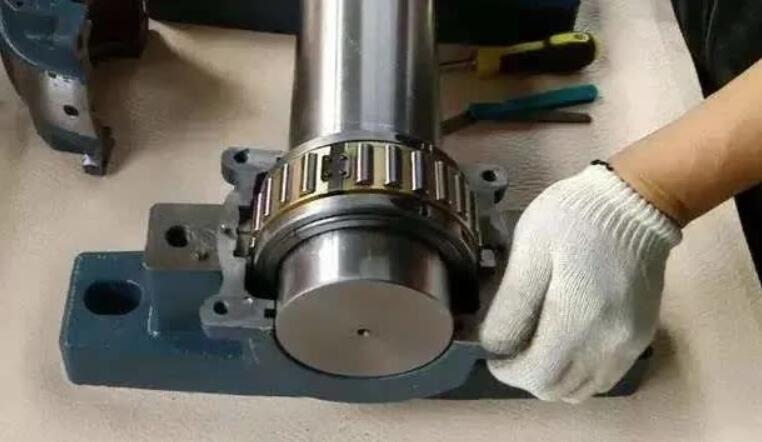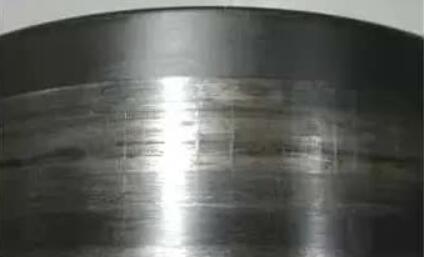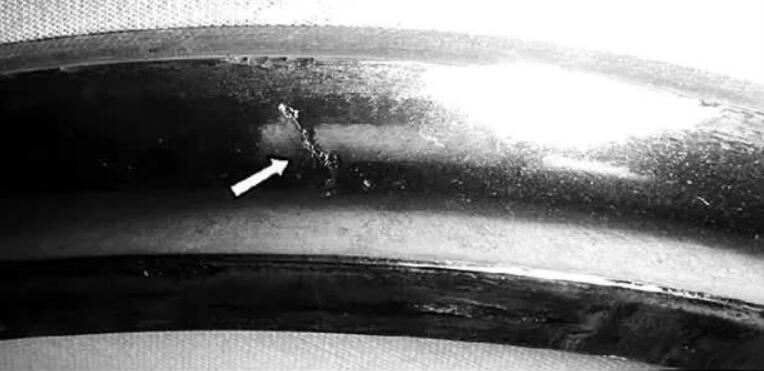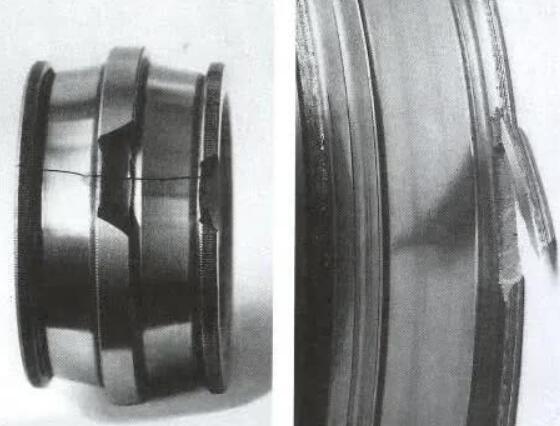Newsroom
Fracture Modes of Bearing Rings and Their Causes
2017-01-03The bearing ring is an essential component of bearings, and are common forms of damage during their use. Cracking not only affects the normal operation of the bearing but may also lead to equipment failure. Below are the common forms of cracking in bearing rings in daily life and an analysis of their causes:

1. Cracking of Deep Groove Ball Bearing Outer Rings and Causes
Phenomenon: When the outer ring of a bearing fractures, the fracture surface is usually perpendicular to the surface, starting from the inner diameter surface on the right side of the raceway and rapidly extending outward to the left until complete fracture. The fracture surface shows no significant plastic deformation, exhibiting brittle fracture characteristics.
Cause Analysis:
- Heat Treatment Issues: During the heat treatment process, the protective atmosphere in the furnace contains various gases (such as oxidizing, neutral, reducing, and carburizing gases), which undergo complex chemical reactions at high temperatures. Improper selection of heating medium, heating rate, heating temperature, and holding time can lead to imbalances in decarburization or carburization reactions, affecting the carbon concentration and gradient in the ring.
- Poor Temperature Control: Excessive fluctuations or uneven furnace temperatures can reduce the quality of heat treatment, increasing the risk of cracking.
- Inadequate Carbon Potential Control: Improper control of carbon potential in the furnace may result in uneven surface carbon concentration, leading to brittle fracture.
2. Contact Fatigue Cracking of Bearing Rings and Causes
Phenomenon: Cracking during bearing use often manifests as contact fatigue spalling, followed by a one-time brittle fracture in the spalled area. Macroscopic cracks are relatively straight, and microscopic fracture surfaces are flat, exhibiting cleavage characteristics, with rapid expansion zones occupying most of the fracture surface.
Cause Analysis:
- Material Microstructure: Inhomogeneous material microstructure or defects can easily initiate fatigue cracks.
- Improper Surface Hardening Processes: Improper surface hardening processes (such as carburizing or quenching) may cause surface stress concentration, increasing the risk of fatigue cracking.
- Surface Roughness: High surface roughness can lead to microcracks under contact stress.
- Poor Lubrication: Inappropriate or insufficient lubrication increases friction and stress on the contact surface, accelerating fatigue crack formation.
- Stress Concentration: Excessive or uneven stress during operation can cause fatigue cracks in stress-concentrated areas.

3. Cracking of Outer Ring Raceway Surfaces and Causes
Phenomenon: The raceway surface of the outer ring exhibits transverse cracks parallel to the grinding direction. The fracture surface is fine and porcelain-like, initiating from the raceway and rapidly extending inward until complete fracture.
Cause Analysis:
- Excessive Grinding Volume: Excessive grinding generates high heat, leading to surface cracks.
- Poor Grinding Conditions: Insufficient cooling or excessive grinding speed increases surface thermal stress, causing cracks.
- Insufficient Tempering: Inadequate tempering of the outer ring results in high residual stress, increasing susceptibility to grinding cracks.
- Current Intensity Effects: Even weak current intensity can, over time, form ripple-like grooves on the raceway surface, exacerbating cracking.

4. Cracking of Inner Ring Raceway Surfaces and Causes
Phenomenon: After rough grinding of the inner ring raceway, magnetic particle inspection reveals numerous fine cracks on both sides of the raceway, especially near the oil groove. Some rings exhibit deep cracks perpendicular to the grinding direction and peeling. Hot acid etching reveals network-shaped cracks and straight cracks perpendicular to the grinding direction.
Cause Analysis:
- Excessive Grinding Heat: Excessive heat generated during grinding causes surface thermal stress concentration, leading to cracks.
- Insufficient Cooling: Inadequate cooling during grinding prevents timely heat dissipation, increasing the risk of surface cracking.
- Internal Material Stress: High residual stress within the material can initiate cracks during grinding.
- Improper Grinding Processes: Incorrect grinding speed or depth increases surface stress, causing cracks.

Summary
The causes of bearing ring cracking are diverse, primarily related to heat treatment processes, grinding processes, material microstructure, lubrication conditions, and operational stress. To prevent bearing ring cracking, the following measures should be taken:
- Optimize Heat Treatment Processes: Strictly control furnace carbon potential, heating rate, and temperature to ensure uniform carbon concentration in the ring.
- Improve Grinding Processes: Select appropriate grinding parameters and ensure adequate cooling to reduce grinding heat.
- Enhance Material Quality Control: Ensure uniform material microstructure and avoid internal defects.
- Improve Lubrication Conditions: Choose suitable lubricants to ensure adequate lubrication during operation.
- Control Operational Stress: Avoid excessive or uneven stress on the bearing to reduce stress concentration.
By implementing these measures, the risk of bearing ring cracking can be effectively reduced, extending the bearing's service life.


